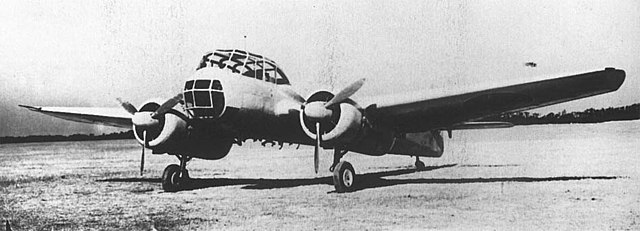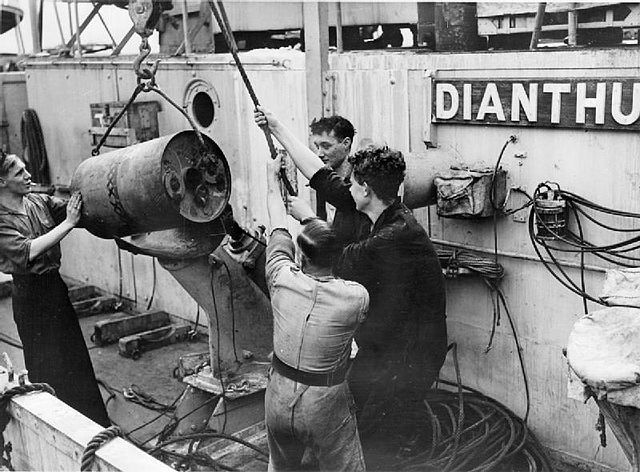The Kyūshū Q1W Tōkai was a land-based anti-submarine patrol bomber aircraft developed for the Imperial Japanese Navy in World War II. The Allied reporting name was Lorna. Although similar in appearance to the German Junkers Ju 88 medium bomber, the Q1W was a much smaller aircraft with significantly different design details.
Kyushu Q1W
Kyushu Q1W Tokai maritime reconnaissance
Captured Kyushu Q1W examined by US personnel in 1945
Anti-submarine warfare is a branch of underwater warfare that uses surface warships, aircraft, submarines, or other platforms, to find, track, and deter, damage, or destroy enemy submarines. Such operations are typically carried out to protect friendly shipping and coastal facilities from submarine attacks and to overcome blockades.
Royal Navy officers on the bridge of a destroyer on convoy escort duties keep a sharp look out for enemy submarines during the Battle of the Atlantic, October 1941
An example of an anti-submarine net, once protecting Halifax Harbour, Canada.
11-inch Howitzer Mk. I on British armed merchant cruiser HMS Patia in 1918, it had a range of just about 600 yards (550 m)
A depth charge thrower being loaded, aboard corvette HMS Dianthus, 14 August 1942







